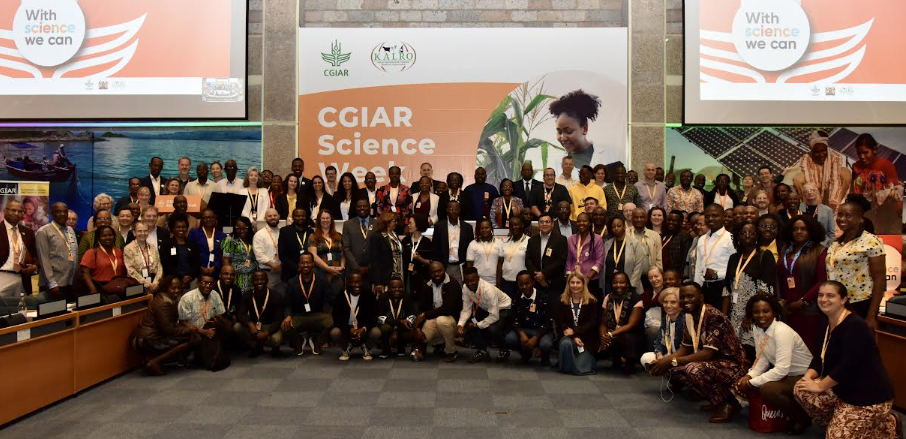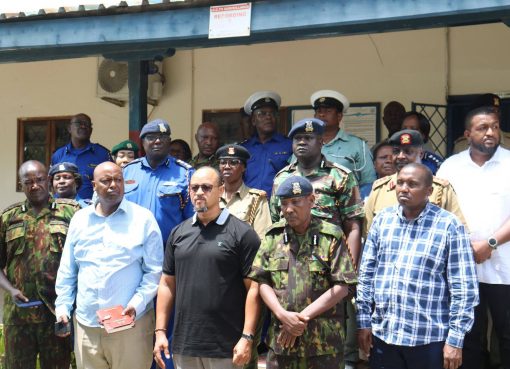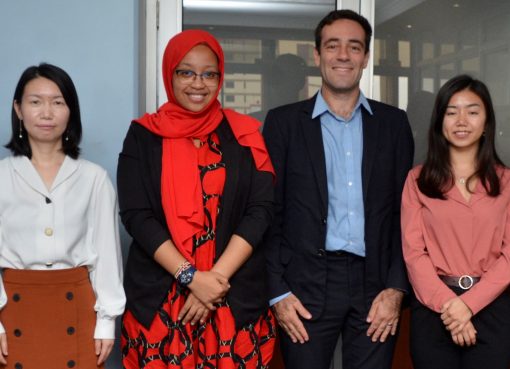The Consultative Group on International Agricultural Research (CGIAR) is working towards improving the lives of people from low- and middle-income countries by sustainably transforming animal and aquatic food systems.
Through the Sustainable Animal and Aquatic Foods (SAAF) Program, they want to foster inclusive, healthy, and nutrient-dense food supply chains that are climate- and environmentally friendly.
Speaking during the CGIAR science week at the UN Complex, Rodrigue Yossa, Interim Director of the Sustainable Animal and Aquatic Food Science Program of the CGIAR, said the 6-year program will work in 17 countries from Africa, Asia, South America, and the Pacific.
Kenya, which is among the countries that will benefit from Africa, and according to Yossa, one outcome that is very clear is that the program will improve the livelihoods of 1.7 million people across the board.
“SAAF aims to create sustainable, nutrient-dense food supply chains that are both climate- and environmentally-friendly through a combination of scientific innovations, policy changes, and inclusive practices,” he said
The program will be implemented and achieved through six areas, namely, productivity, climate and environment, one health, market systems policy solutions and scaling, data and digital solutions, and gender, youth, and social inclusion.
James Rao, an agricultural economist from the International Livestock Research Institute (ILRI), said that within the SAFF program, they are looking at being able to co-design, deploy, and evaluate market systems innovations for enabling farmers to take up improved innovations and to be able to participate in aquatic animal food markets in a gainful manner.
“We look at developing market systems that are very inclusive of what often is left out of these locating market systems and looking at the behavioral and institutional changes that can enable more farmers to participate, especially the smallholder livestock keepers,” he added.
Rao further said that they are looking at how they can scale the innovations that enable more participation by this category of farmers by looking at policy solutions that would make the environment conducive.
Majority of livestock keepers who are underserved are not included in programmes despite the many challenges that they encounter, saying that the SAAF program has assisted dairy farmer to develop business models that benefit them.
“We are going beyond individual technologies and trying to look at integrated delivery models. which business or market actors can we work with to ensure that we are able to reach more farmers”, Rao said
Rao explained that they are seeking to work with private sector actors, market actors that already have a relationship with farmers, to co-design with them approaches that will help reach more farmers from the livestock side to leverage on these platforms
Oliver Mukunza, a dairy farmer from Nangili, said after yearning for a long time to start up a dairy unit farm, he came across ILRI personnel by chance after a friend of his told him there were some experts who were visiting to train farmers on dairy.
“My friend and I went just to listen it but we found ILRI people who were talking about dairy. I pursued them to find out more and sat down with them and they guided me on how to start a unit,” he told KNA
Mukunza explained that before he started, he was advised to have fodder and put up a structure before bringing the animal, saying they assisted him with seeds to plant for fodder, which was a special Napier, and within 6 months, he started the project.
“If these people had not come down to talk to us and given us the knowledge, I would not be where I am now. I now have 3 good animals that are giving me 66 litres of milk every day, having started from zero,” he said.
Mukunza said although the returns of putting up a dairy unit are good, it is, however, very difficult for small-scale farmers to afford, as it requires a good amount of money not only to do fodder but also when it comes to getting cattle that will give you returns.
“Funds in terms of getting the right breed is expensive; a good animal will cost Ksh 300,000, getting good fodder is also not easy, especially if a farmer wants returns,” he said, urging the experts to link farmers to financial institutions and also giving them good advice on hygiene on dairy, especially on disease such as mastitis that has affected his dairy once and causing him massive losses
70 percent of the dairy sector in Kenya is done by small-scale dairy farmers. Despite the importance, the sector still faces challenges. The SAAF programme success hinges on the strength of its partnerships across continents
According to CGIAR Managing Executive Director Dr. Ismahane Elouafi, SAAF will be a platform for change custom-made to local realities and whose initiative aligns with national food system priorities.
By Wangari Ndirangu





